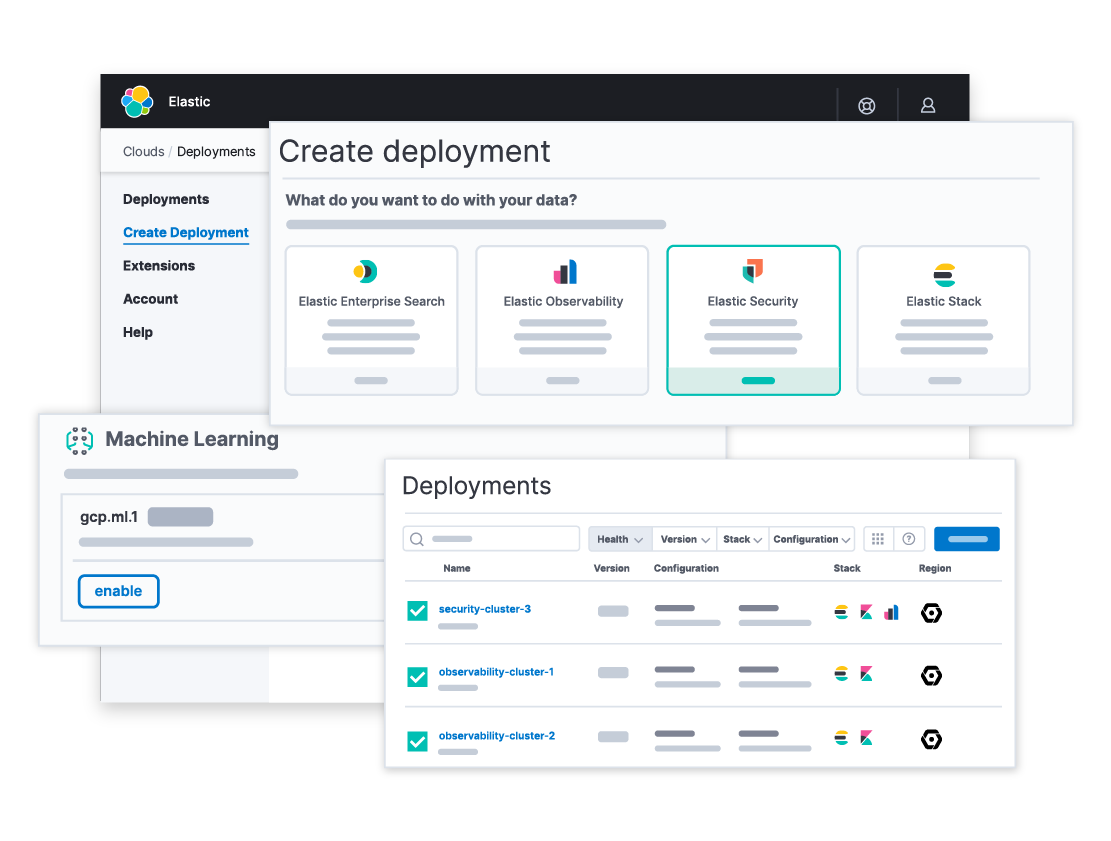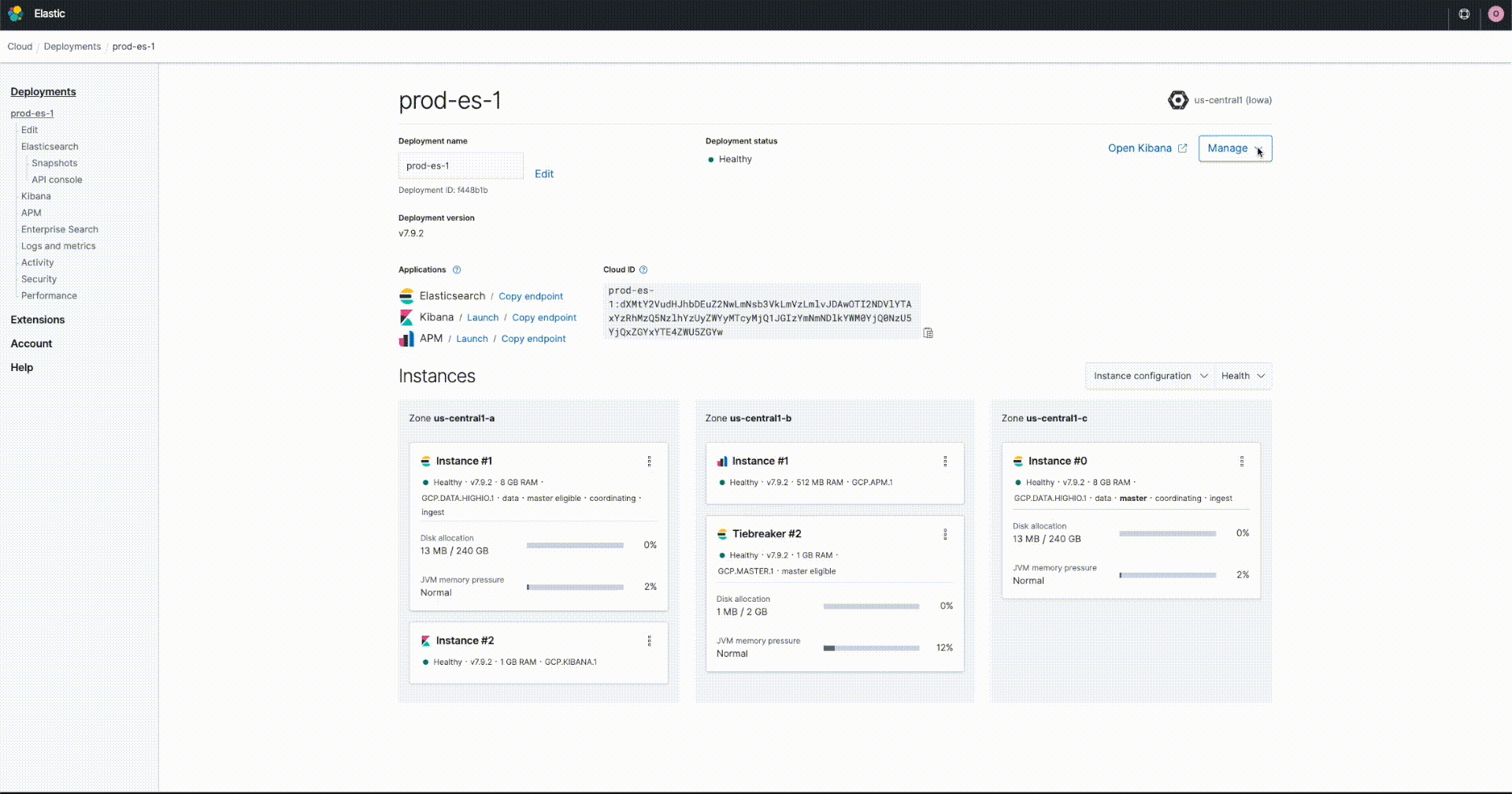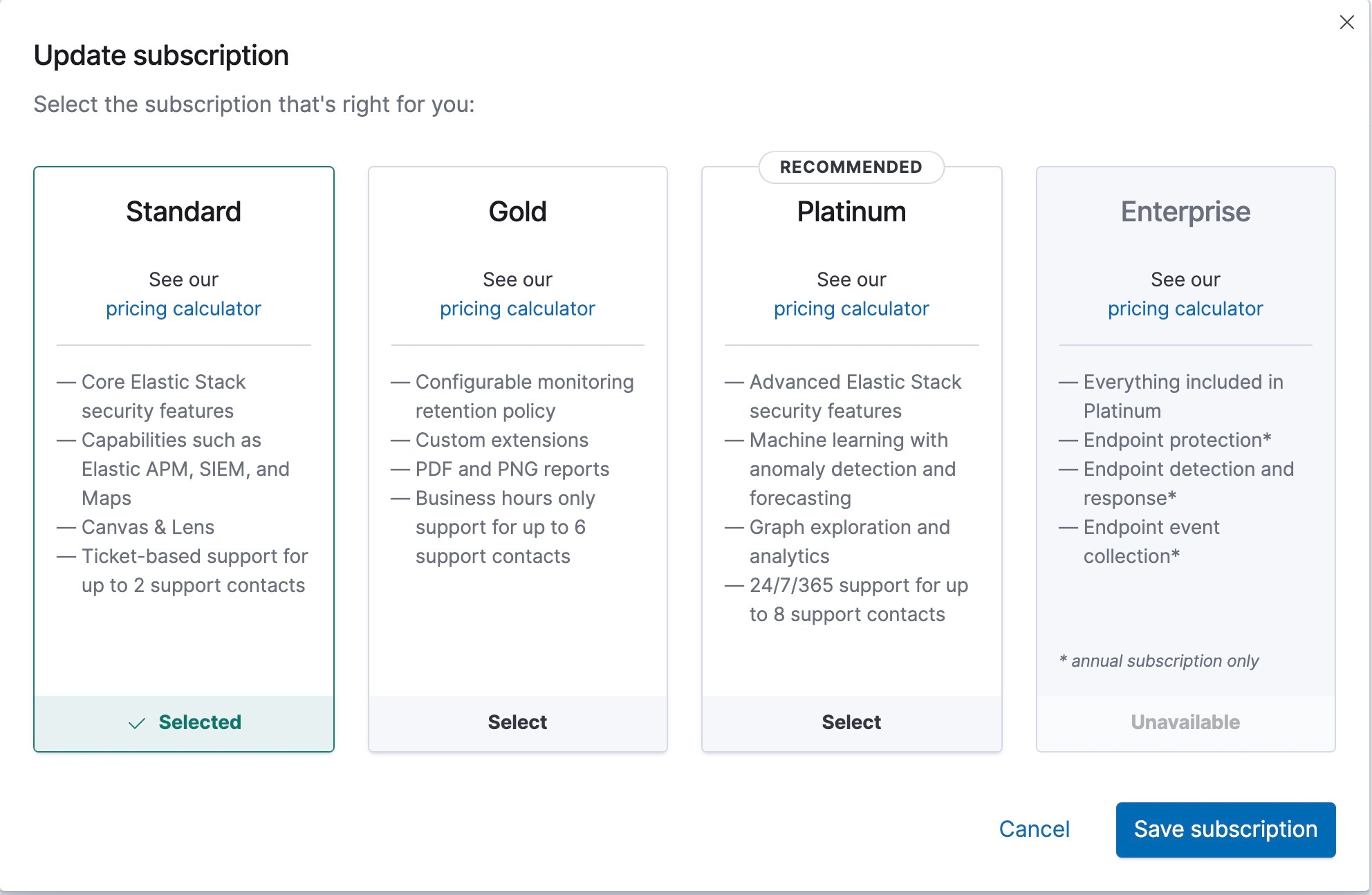What’s new in Elastic Cloud for 7.10: Onboard quickly, save money, and deploy in more places
There’s a lot that’s new across our managed and self-managed cloud technology in Elastic 7.10, which is nicely summarized in the release blog. Onward to the cloud!
Enhancements to Elastic Cloud help simplify deployment creation, monitoring, and maintenance, including cost-saving data management features, new deployment regions, and an added cloud provider — Red Hat OpenShift. Let’s dig into the details.
Optimize for your use case using new solution-specific deployment templates
Now it’s even easier to get started with Elastic Cloud. If you’ve been in the Elastic Cloud console lately, you may have seen the “create deployment” user interface enhancements, which make it easier for you to select and provision solution-specific deployments. Depending on your selection, Elastic Cloud provisions infrastructure resources (e.g., vCPU, and RAM) that are optimized for your deployment. And if you need to customize your deployment for special use cases, you can.

Monitoring Elastic Cloud deployment logs and metrics
You can now leverage Elastic Observability to monitor your Elastic Cloud deployments. Configure log and metric delivery with the Elastic Cloud API, and then use the observability features to audit access, detect issues, and identify slow query performance. Learn more by reading the "Monitoring Elastic Cloud deployment logs and metrics" blog post.

One-click upgrades
Upgrade your deployment’s version and all of its components (e.g. Elasticsearch, Kibana and more) with a single API call, or a button click from within the Elastic Cloud console. Best of all, upgrades are designed to introduce no downtime. Visit our documentation to learn more.
A subscription that’s right for you
If you run your Elastic deployment on Google Cloud, you can now switch between Elastic Cloud subscription levels from within the Google Cloud Marketplace. Easily upgrade and downgrade between Standard, Gold, Platinum, and Enterprise subscriptions. Get immediate access to premium features and support plans that fit the needs of your business. Log into the Google Cloud Marketplace to get started.

Coming soon: Double your storage density or save 50% on cost with the new cold tier on Elastic Cloud, powered by searchable snapshots
Available later this year, you can store deployment snapshots in a cold tier — low cost, durable object storage like Amazon S3. Cold tiers coupled with searchable snapshots brings two major benefits. You can save more than 50% on your data storage costs by switching from warm tier (e.g., SSD) to cold tier (i.e., object storage). Best of all, you still have access to all of your data and can search 100% of your snapshots.
Data tiers unlock new opportunities if you are challenged with balancing data analysis with storage costs. You can choose whether you want to analyze more data with the same budget, or continue to analyze the same amount of data and benefit from the cost savings. Check out the searchable snapshots blog to learn more.
Deploy Elastic in three new additional regions
Now you can run your deployments in more than 40 Elastic Cloud regions. These regions span across AWS, Google Cloud, and Microsoft Azure. We recently added three more regions, including AWS Mumbai, as well as Microsoft Azure Iowa and New South Wales. Visit our regions page to see all of our supported regions.

Elastic Cloud Enterprise 2.7
Great news! Elastic Cloud Enterprise (ECE) 2.7 is generally available. ECE lets you centrally orchestrate a fleet of Elasticsearch clusters using the same software that Elastic uses to run Elastic Cloud. ECE 2.7 also includes all of the features discussed above. Whether you choose our managed service or elect to manage it yourself, you’ll benefit from streamlined onboarding, deployment monitoring, one-click upgrades, self-service subscription changes, and three new regions.
Elastic Cloud on Kubernetes 1.3
We are excited to announce Elastic Cloud on Kubernetes (ECK) 1.3 is generally available. This release is packed with goodies to help you speed your deployment, streamline management, and let your run in more places.
Deployments just got easier
Now you can deploy ECK with the ECK Helm Chart. Helm is a package management system for Kubernetes that uses a packaging format called a “chart.” You can package your application in a format that anyone can deploy on a Kubernetes cluster with just a few commands, while reducing or eliminating manual changes to YAML files. This makes deployments standard and repeatable. Check out our documentation to learn more.
Faster resizing
Resize Persistent Volume Claims (PVC) for your Elasticsearch clusters deployed through ECK. The process to resize has been streamlined, so you no longer need to rename your nodeSet or migrate data. Storage volume increases are now seamless and lengthy data migration operations are eliminated.
Red Hat OpenShift Operator Certification
Good news for Elastic and Red Hat customers! Elastic Cloud for Kubernetes is now a Red Hat OpenShift Certified Operator. You can select and provision deployments directly from OpenShift Operator Hub. Be on the lookout for more information on our partnership and the certification.
Get started today
Log in to the Elastic Cloud console to get started. If you’re new to Elastic Cloud, it’s easy to sign up for a free 14-day trial with your Google Account and try it out. If you are self-managing, download ECE or ECK to get started on-premises or on your favorite IaaS provider.